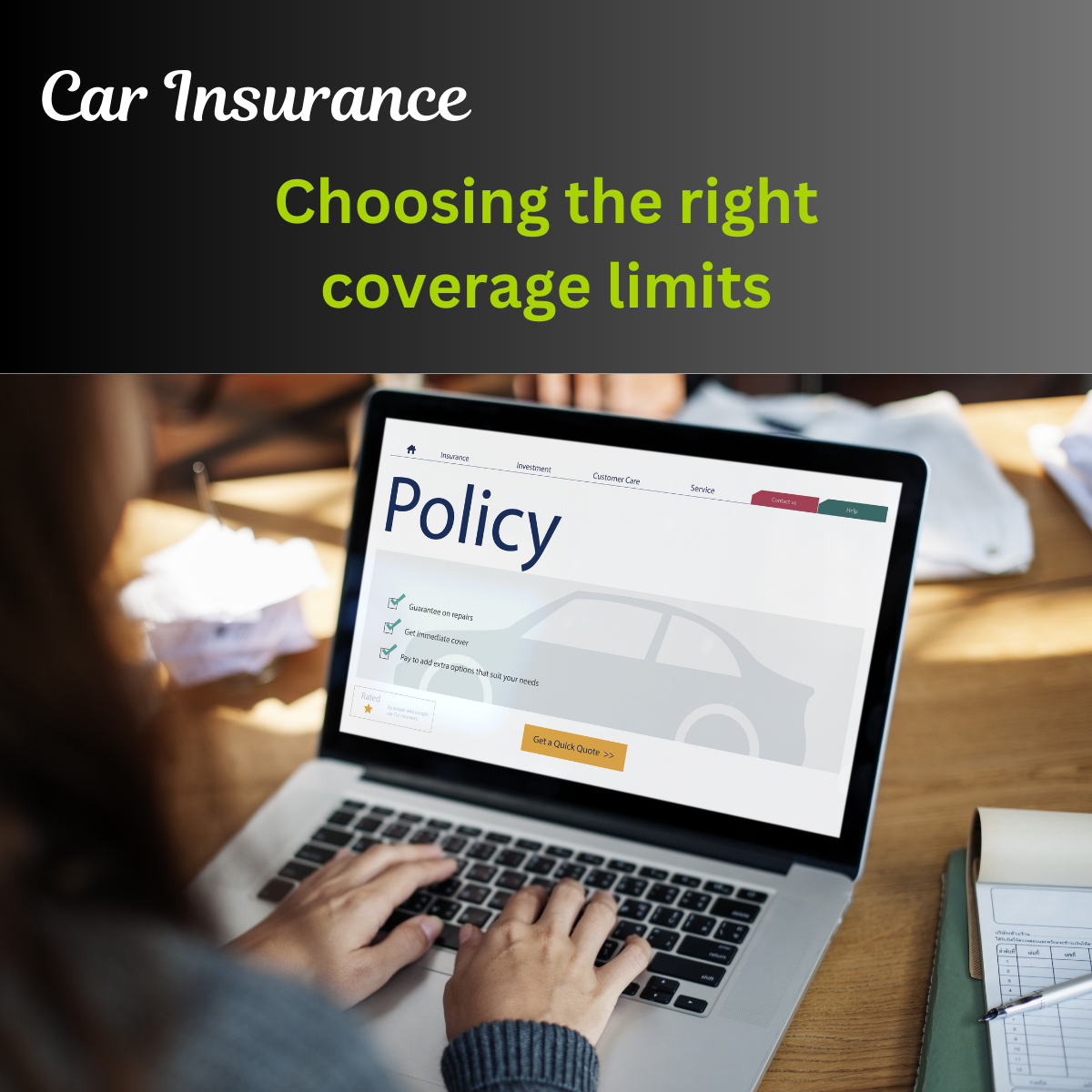
When it comes to shopping for car insurance, choosing the right coverage limits can be a bit confusing. We’re going to help you simplify the process.
Car Insurance Coverage overview
In this article we’re going to focus on your liability limits. These are simply the coverage limits available to you for property damage and injuries. Depending on your state, you may have some different options. We’re going to discuss the most common car insurance coverage.
Bodily Injury Liability
This coverage is to pay for injuries to someone else in a car accident in which you are at-fault. You can choose split limits or combined single limit.
EXAMPLE:
Split Limits: $100,000 per person / $300,000 per accident
Combined Single Limit: $300,000
As you can see in the split limits, you’ll have a $100,000 limit per person for injuries not to exceed a total of $300,000.
For Combined Single Limit, you would have a total coverage of $300,000 without any limit per person.
Our Recommendation
Split Limits: $250,000 per person / $500,000 per accident
OR
Combined Single Limit: $500,000
Why?
- The price difference for higher limits is usually not as much as you would think.
- Many times an injury can exceed $100,000 considering emergency room, surgery, lost wages and ongoing physical therapy etc.
- If you’re considering adding an Umbrella policy, most companies will require these higher limits to be eligible.
- Higher discount if you’re moving insurance companies. They take into consideration your previous limits. If you have state minimum required limits, you’ll likely pay more.
Property Damage Liability
This protects you for damages to others property when you are in an at-fault accident. That property can be other vehicles, road signs, a building (that would be a really bad day!) etc.
If you have split limits, as we just discussed, you’ll see a separate limit for Property Damage Liability. If you have elected Combined Single Limit, you will not see a separate coverage amount because it is all part of your one single limit.
EXAMPLE:
Split Limits: $100,000 per accident
Combined Single Limit: $300,000 (total coverage you have for both Bodily Injury and Property Damage Liability)
Our Recommendation
Split Limits: $250,000 Property Damage Liability
OR
Combined Single Limit: $500,000
Why?
- There are a lot of vehicles worth close to $100,000 or more.
- Increasing number of electric vehicles on the road with very expensive repair costs.
- Multi-vehicle accidents can easily exceed $100,000.
Uninsured Motorist Bodily Injury
Covers your injuries if the other driver doesn’t have car insurance. Not required in all states.
Our Recommendation
$250,000 per person / $500,000 per accident
Why?
1 in 8 drivers are uninsured according to the Insurance Information Institute. That should be reason enough.
Underinsured Motorist Bodily Injury
Covers your injuries if the other drivers policy limits aren’t enough to cover your medical costs.
Our Recommendation
$250,000 per person / $500,000 per accident
Why?
- Drivers can purchase extremely low liability limits which often times leave a large gap in coverage.
- Most states only require $25,000 per person. This will almost certainly not cover a significant injury.
Medical Payments or Personal Injury Protection
Depending on what state you live in you’ll have the option of purchasing Medical Payments. This is for you and your passengers to pay for injuries if you’re at-fault. Remember, your Liability coverage only pays for people in the other vehicle, not your own.
Personal Injury Protection (PIP) pays no matter who is at-fault. This coverage is only available in some states and may be optional or required.
Our Recommendation
Depends on your health insurance and state you live in.
Why?
Even if you have health insurance you may elect to purchase Medical Payments to help cover the cost of your health insurance deductible.
Conclusion
Just like anything else in life, you get what you pay for. If you’re saving a lot of money and have a cheap policy, it’s likely your car insurance coverage could fall short come claim time.
Have a conversation with your agent and find the risk tolerance you’re comfortable with. The most important thing is understanding what coverage you actually have so there are no surprises later.
Related Articles
Should I Buy Rental Car Insurance?
Car Insurance Online vs An Agent
Is Cheap Car Insurance Worth It?
